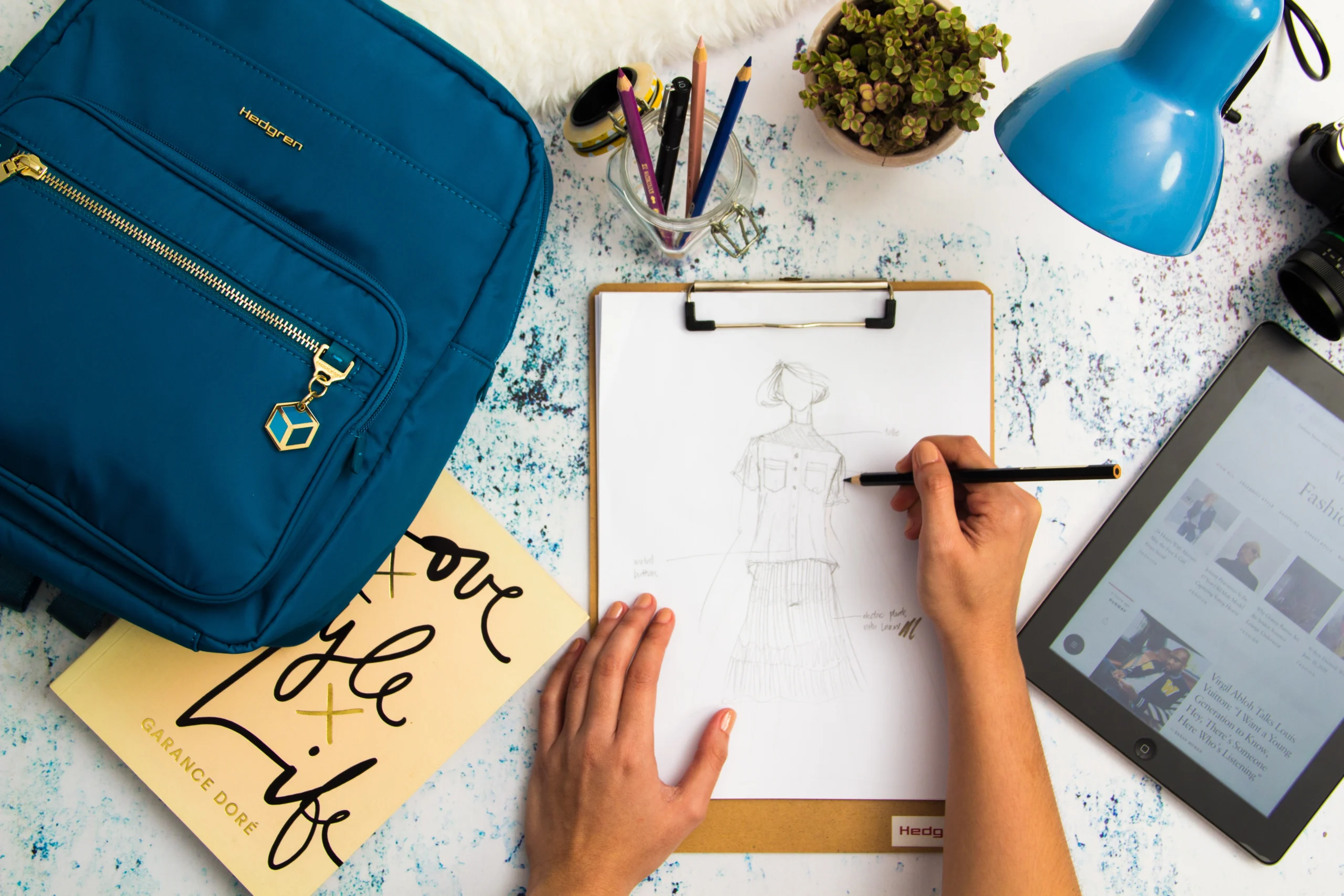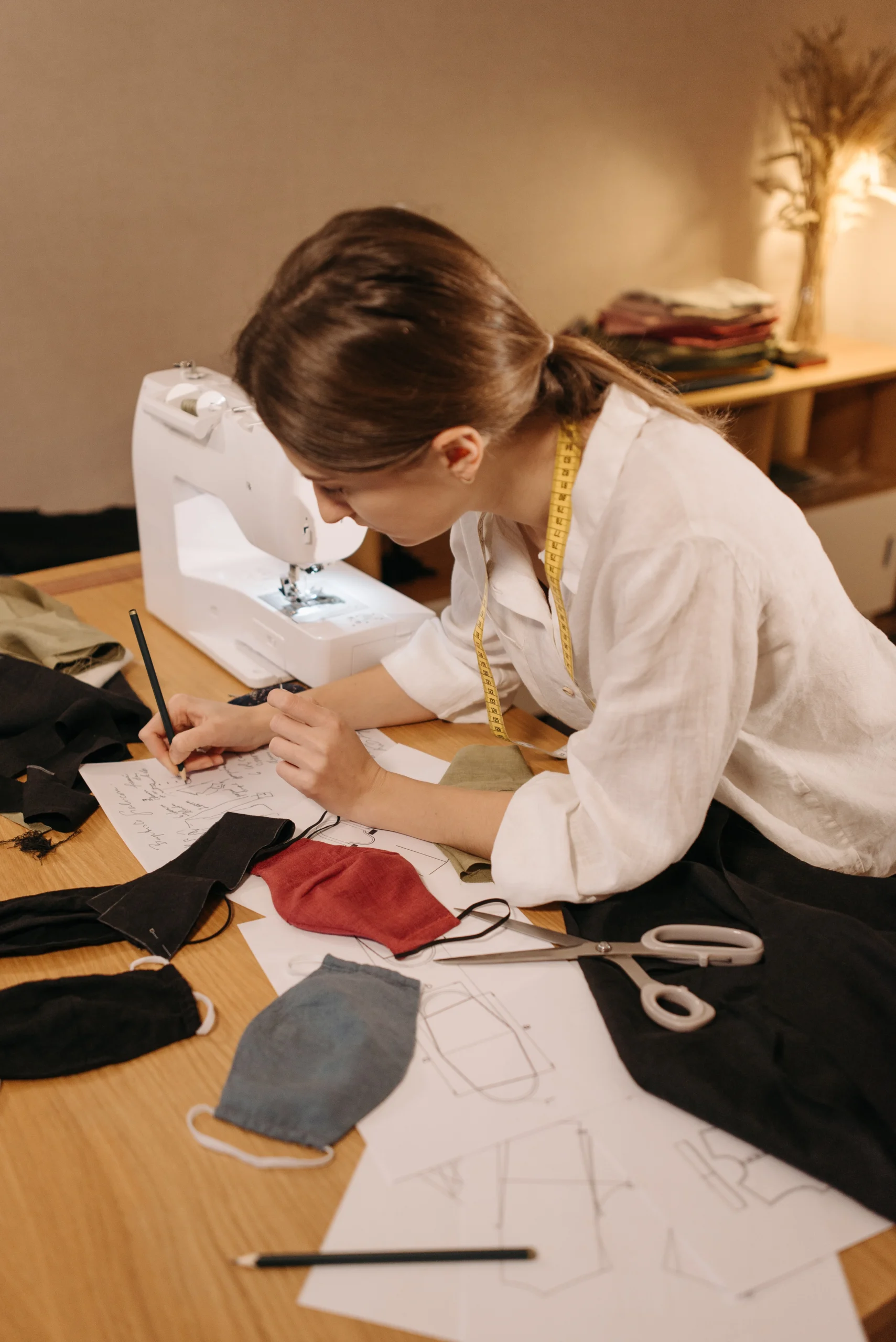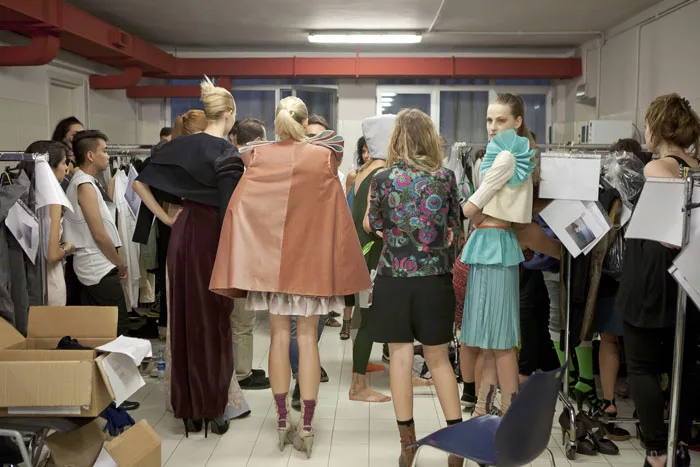Fashion sketches allow you to present your design ideas in a compelling visual way. They allow you to express your creativity, while also showing the client what you have in mind.
Drawing fashion sketches is a crucial skill for anyone aspiring to enter the field of fashion design. Here’s a guide for beginners on how to draw fashion sketches and how this skill helps in the realm of fashion designing:
How to Draw Fashion Sketches for Beginners:
In this tutorial, we will show you how to draw fashion sketches step by step. We will cover the basics of sketching and give you some tips on how to improve your designs.
Materials Needed:
- Sketchpad or Drawing Paper: Choose a good-quality paper that can handle erasing and shading.
- Pencils: Start with a set of pencils, including HB, 2B, and 4B for varying line weights.
- Eraser: A good quality eraser for clean corrections.
- Great-Tip Markers or Pens: for outlining and adding details.
- Colored Pencils or Markers (Optional): For adding color to your sketches.
Step-by-Step Guide:
Step 1: Basic Body Shape
- Begin with a simple elongated oval for the head and a straight line down the center for the body’s axis.
Step 2: Proportions
- Divide the body into eight equal sections, with the head occupying the first two sections. Those sections will help you keep proper proportions.
Step 3: Torso and Limbs
- Sketch a slender rectangle for the torso and add lines for the shoulders, arms, and hands. Extend lines downward for the hips and draw the legs with bends at the knees.
Step 4: Facial Features
- Add facial features within the oval for the head. Keep it simple for beginners—outline eyes, nose, and mouth. Experiment with different hairstyles.
Step 5: Clothing Guidelines
- Use light, loose lines to outline the shape of the outfit. Consider the waft and movement of the fabric. Indicate details like collars, cuffs, and hems.
Step 6: Refine the Sketch
- Clean up and refine your initial sketch, erasing any unnecessary lines. Add details to the clothing, such as patterns or textures.
Step 7: Finalize with Ink or Darker Lines
- Go over the final lines with a pen or darker pencil to define your sketch. This step helps bring clarity to your drawing.
Step 8: Add Color (Optional)
- If desired, use colored pencils or markers to add a splash of color to your fashion sketch.
Step 9: Practice Regularly
- Improvement comes with practice. Regularly sketch different poses, outfits, and styles to hone your skills.
How Fashion Sketching Helps with Fashion Designing:
- Visualization of Ideas:
- Sketching allows designers to visualize and communicate their design ideas before moving to the production stage. Absolutely! Sketching is an essential tool for designers as it helps them bring their ideas to life and effectively communicate their vision to others.
- By sketching, designers can explore different possibilities, experiment with layouts, and refine details.
- It allows them to quickly iterate and make adjustments without the constraints of technology or software.
- Moreover, sketches serve as a tangible reference point throughout the design process, ensuring that everyone involved is aligned on the final product.
- Overall, sketching empowers designers to unleash their creativity and turn concepts into reality with clarity and precision.
- Design Development:
- Sketching is an integral part of the design development process, helping designers experiment with shapes, styles, and details.
- Sketching allows designers to quickly iterate through different concepts, refine their ideas, and make necessary adjustments before moving forward with more time-consuming processes like creating digital mock-ups or prototypes.
- It provides an opportunity for designers to unleash their creativity without being constrained by technology or software limitations.
- Furthermore, sketching enables designers to capture the essence of a design concept in its raw form. By putting pen to paper, they can freely express their thoughts and emotions while exploring different possibilities.
- This hands-on approach often leads to unique solutions that may not have been discovered through digital means alone. Not only does sketching enhance the creative process by facilitating ideation and exploration, but it also fosters collaboration within design teams.
- Sketches serve as a common visual language that can be easily shared amongst team members for feedback and discussion. This collaborative aspect promotes effective communication, ensuring everyone is on the same page throughout the design development journey.
- Communication Tool:
- Fashion sketches hold a powerful position in the fashion industry, acting as a universal language that seamlessly bridges the gap between designers, pattern makers, and clients.
- They play a vital role in facilitating clear and effective communication across all stages of the design process.
- By visually representing ideas, fashion sketches bring concepts to life, allowing designers to effectively convey their vision to pattern makers and clients alike. Through these detailed illustrations, intricate details such as fabric choices, silhouettes, and embellishments can be accurately communicated, ensuring that everyone involved in the creative process shares a common understanding and achieves a harmonious outcome.
- Fashion sketches truly embody both artistry and functionality as they eloquently translate the abstract realm of imagination into tangible designs that captivate audiences worldwide.
- Pattern Making:
- Detailed sketches provide essential information for pattern makers, guiding the creation of garment patterns.
- They provide essential information to pattern makers, allowing them to accurately understand and interpret the design concept. By including specific details such as silhouette, seam placements, and style lines, detailed sketches serve as visual references for pattern makers.
- This helps them translate the design into precise measurements and shapes that will ultimately form the basis of the garment pattern. Additionally, detailed sketches also assist in conveying important design elements like darts, pleats, gathers, and any other special features.
- These visual cues enable pattern makers to understand how different fabric pieces should be shaped and manipulated to achieve the desired look. In essence, detailed sketches are invaluable tools that bridge the gap between a designer’s vision and a tangible pattern.
- They facilitate effective communication between designers and pattern makers by providing clear guidelines for creating accurate patterns that bring fashion designs to life.
- Portfolio Building:
- Fashion sketches contribute to a clothier’s portfolio, showcasing their skills and creativity.
- Client Presentations:
- Clean and specified sketches resource in offering layout ideas to customers, supporting them in visualizing the very last product.
- Decision-Making:
- Sketches help designers make informed decisions about fabrics, colors, and design elements.
- Quick Prototyping:
- Sketching allows for quick prototyping of design ideas, enabling designers to explore various possibilities. and iterate on their concepts.
- With just a pencil and paper, designers can quickly capture their thoughts and visualize different design solutions.
- Sketching is a valuable tool in the creative process as it helps bridge the gap between abstract ideas and tangible designs. One of the greatest advantages of sketching is its speed.
- Designers can rapidly generate multiple sketches, allowing them to explore various directions without investing too much time or resources. This flexibility enables designers to experiment with different layouts, compositions, and details, pushing their creativity to new limits.
- Creative Expression:
- Fashion sketching is a form of artistic expression, that allows designers to convey their unique style and vision.
- Fashion sketching is indeed a captivating art form that empowers designers to communicate their individual style and creative vision. Through the strokes of a pencil or pen, fashion sketches bring garments to life on paper, giving them shape, texture, and personality.
- This expressive medium enables designers to showcase their unique ideas and experiment with various design elements such as silhouettes, colors, patterns, and embellishments.
- Fashion sketches serve as a visual diary, capturing the creative journey and showcasing the designer’s growth and development over time.
- Historical Documentation:
- Fashion sketches document the evolution of a designer’s ideas and styles over time, serving as a historical record of their creative journey.
- Fashion sketches allow designers to transform their thoughts into tangible representations, enabling them to explore various design possibilities.
- Fashion sketches provide a historical record of a designer’s creative process. They act as visual archives that showcase the progression of concepts from initial inspiration to final designs.
- Looking back at these sketches not only allows designers to reflect on their artistic growth but also provides valuable insights into their design philosophy. In addition to being personal records for designers themselves, fashion sketches are also used for communication purposes within the industry.
- Designers often present these sketches when collaborating with manufacturers, pattern makers, or clients. These drawings serve as blueprints that bridge the gap between imagination and realization.
Conclusion:
In precis, studying to attract style sketches is a precious ability for aspiring fashion designers. It aids in the visualization and communication of design ideas, contributes to the design development process, and plays a crucial role in various aspects of the fashion industry. Regular practice and experimentation will help you refine your skills and develop your unique style in fashion sketching.





